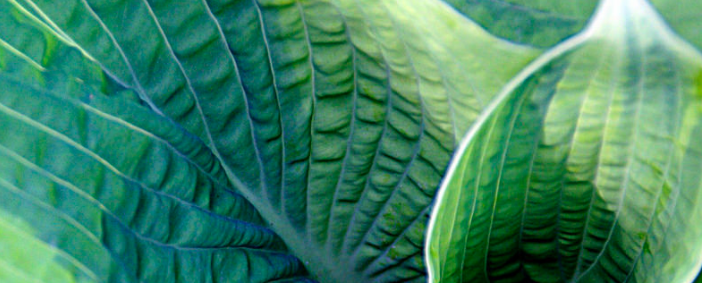
Here is a plant for which we have a real crush: the hosta. Why ? Because on the one hand its “tropical” look is surprising, but especially because it is very suitable for shaded areas where the gardener does not always know what to plant – apart from ivy 😉
Origins of Hosta species.
The hostas come from Japan, Korea and China , and were introduced to Europe in the nineteenth century. This information interests us, not because we want to know if their residence permit is in order, but because they are continental climate countries close to ours . They are therefore perfectly hardy down to -15 ° C, do not fear the winter humidity.
You are curious to know where exactly each species comes from?
The great qualities attributed to Hosta.
These are edible plants!
Yes, like their cousins plantains, hostas are edible . Young shoots and young leaves can be eaten provided they are blanched in boiling water before being prepared.
Easy growing conditions
All Hosta are deciduous, deciduous herbaceous plants .
These are plants that appreciate heavy clay soils, and shade or partial shade . You know, this area that always stays a little damp in the corner of your garden, where the grass refuses to grow and that is covered with moss so the soil is heavy and compacted. Well, this is the favorite domain of hostas! Some hybrids tolerate the sun well, but the risk with such large leaves is that a particularly dry and sunny day in the spring can cause burns.
Note that hostas with bluish and dark leaves are much more sensitive to this kind of burns than those with light or yellow leaves.
The ornamental qualities of Hosta.
The highest quality of this kind is its leaves . They are large, with parallel veins, oval, lanceolate, rounded or cordate.
These leaves are very often variegated or marbled with cream, blue or another shade of green, which gives the hostas masses beautiful variations of texture.
The flower stalks are very erect, which offers a strong contrast with the large rounded leaves. This is one of the characters that makes their visual association with other successful plants . These verticals combine well with horsetails or low grasses, while the compact mass foliage can respond to that of plants with more scattered foliage.
Small funny detail : in the spring, the leaf buds are conical at first, they emerge very quickly from the ground, and in a few days the leaves unfold. Real devils out of their box.
Flowering Hosta.
The foliage of these plants is so striking that we consider their flowering as a bonus. Their flowers may be white or mauve, organized in clusters of small trumpet flowers with star petals .
Only cultivars of the species Hosta plantaginea can be considered as scented , they have the distinction of having flowers that open at night to close in the morning.
Understand Hosta species and cultivars.
The nomenclature – or taxonomy – within the hosta genus is quite confusing. Why ? Because the hostas were hybridized and crossed in Japan long before they were exported to Europe by Philipp von Siebold. These crossings were not documented, so that some natural species were long taken for cultivars, and vice versa. There is still a lot of controversy about the different kinships today, between specialists who rely on genetic criteria, and those who do morphological groupings, but this is not the purpose of this article.
Beyond this original confusion, the hostas generated a real passion in the United States from the 1960s, and nearly 2000 cultivars were created there. So do not be surprised to see cultivar names like ‘Sum and Substance’, ‘Frosted Mouse Ears’ or ‘Cherry Berry’.
Our favorites.
This list is purely subjective because there are dozens of good varieties of hosta. We have selected them for their cultural and ornamental qualities, and also because they are easily available commercially.
Hosta tardinana ‘Halcyon’ : a bluish foliage in the shape of a heart, topped in summer with mauve flowers.
Hosta ‘Blue Mouse Ears’ : small, very rounded, blue leaves, numerous, and purple flowers. Culminates to 20 cm.
Hosta sieboldiana ‘Frances Williams’ : a classic. He wears large blue leaves marbled with soft green.
Hosta ventricosa : one of the type species elongate lanceolate leaves, completely green … it has quality of simplicity.
Hosta plantaginea ‘Grandiflora’ : a fragrant hosta with large white flowers.
Our friends the gastropods.
All varieties of hosta do not attract slugs and snails as much – in a massif one notices great differences from one plant to another. What promotes the activity of the culprits are: the humidity, the lack of food for them at certain periods – precisely when the young hosta leaves are very tender – and the presence of shelters such as leaves fallen to the ground, or crevasses.
Chemical or natural treatments?
With which plants to associate them?
The Asian-exotic look of the hostas makes us want to associate them with the “classic Japanese garden” species. Implied: dwarf conifers, azaleas, ferns, maples from Japan, etc. The association works in terms of image, but in terms of culture conditions it forces to force Nature. It is associating plants of fresh, drained, acidic grounds, to hostas which like the fresh, heavy, and neutral grounds. Fortunately, hostas are flexible and can adapt, but they will be less vigorous.
Associations more respectful of the needs of this species are for example those with rodgersias, daylilies, iris and heucheria.